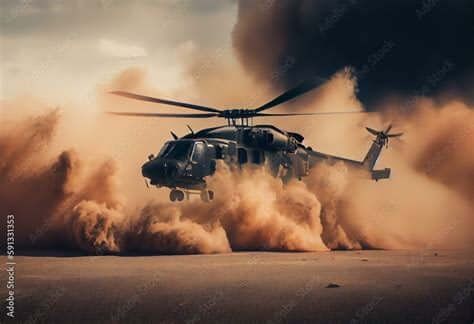"Walking Away From The Ledge” The Cut List: Vol. 17. These are the stories that didn’t make the cut to the final edit in my book. Some of these stories will jump around, but I’ll do my best not to leave you, the reader, guessing when and where they happened.
Taking a big leap from the last post all the way to 2012. A brief summary is that we went to Fort Rucker for Warrant Officer Candidate School (WOCS), Basic Officer Leaders Course (BOLC), Survive, Escape, Resist, Evade School (SERE), and all the training to become a Blackhawk pilot. After that, we moved to our first aviation unit at Fort Campbell, 5th Battalion 101st Aviation Brigade. We bought a house, and Charlize finally slept through the night! Grab a copy of the book for the detailed version!
We went to Fort Carson twice for HAMET (High Altitude Mountainous Environment Training) and to conduct an MRX (Mission Readiness Exercise). Learning to fly in high-altitude and mountainous terrain was rather exciting, and Fort Carson’s surrounding peaks, including Pikes Peak, did not disappoint!
High-altitude flying can be summed up rather easily as accounting for the percentage of power available due to environmental conditions and using that power in the most prudent manner. There it is, now you can fly in mountainous terrain. Also, be aware of the weather you’re flying into, as it can change quickly in the mountains compared to other areas.
Flying through those peaks and valleys is visually stunning and stimulating. To see massive boulders of granite rock just perfectly stacked on each other, with large trees sprouting around them and blips of snow here and there that refuse to melt on a 50-degree day while in the shade, makes one awestruck.
The joy of seeing such a sight is fleeting, as we must constantly be aware of the pending doom that surrounds us if we are anything less than vigilant for even a moment. Getting caught up in the visual impressiveness and losing focus on other in-flight obstacles, such as changes in wind direction or cloud levels, or a lack of available power due to increased altitude, could all serve to change a sightseeing experience into a fatal accident. I’m having to fly with an IP until the training is complete, and we usually flew with two pilots in training, so while I was in the crew window, I took the opportunity to enjoy the sights and views a bit more.
In preparation for Afghanistan, we also practiced dust landings repeatedly. I surprised myself, and other pilots, as I was ok at them. I was flying with our BN SP (Battalion Standardization Pilot), whom I had been informed was a colossal prick, while we were conducting formation flight training and landing in numerous areas in Fort Carson’s training area to practice formation flight dust landings.
I had an initial hiccup keeping with the bird in front of me, to which he calmly and firmly said, “Catch up!” Nervous, I gave a bit too much power and almost overtook the aircraft, to which he said, in the same manner as before, “slow back.” He came on the controls with me for a moment, got the aircraft where it needed to be in the formation, and said, “Hold this position relative to the aircraft next to us.” I did, the whole flight. He didn’t say another word until the landing. I took his silence to mean that I was doing well.
The landing would be a multi-ship dust landing. We had four aircraft in total. He was calling out altitudes and airspeeds, “100 feet, 70 knots.” Slowing back and coming down in altitude to prepare for landing, “70 feet, 50 knots.” I knew from the classroom and previous daytime training that I was looking for 35-to-40 feet and 22-to-25 knots to initiate the approach while maintaining aircraft disk separation of 2-to-3 disk lengths.
“50 feet, 40 knots.” I kept my focus on the bird to my front left. I could get as close as I wanted, but I couldn’t touch it; that’s game over! “35 feet, 25 knots.” The call came over the radio, “commit, commit, commit,” and we all initiated our approach together. It was a zero-illum night, but I did my best to find a reference point and begin my landing. A quick glance at the heading, and I locked my feet into position.
Another quick glance at the aircraft, still in good position, and I wanted to touchdown just before them so I wouldn’t have their dust cloud adding to mine for a greater difficulty to land. “Dust at the tail,” “Dust at the window,” “Dust at your door.” The crew chief’s callouts give us a heads-up on when we may lose visual contact with the ground. I lose visual contact with everything but maintain my controls where they are. I hear “10 feet,” and I pull up on the collective slightly to cushion the landing, and the Hawk touches down with a good bit of force that causes me to panic. 
With the panic, I bottom out the collective and slam on the brakes. Mistake. “You never drop the collective and hit the brakes like that on a dust landing!” That’s all the BN SP said to me about it. The rest of the landing was great except for when I panicked. Other than the stern correction, I felt pretty good about the whole thing. Especially since I still had little confidence as an 18-month aviator!
Want to know more about some of these situations? You’ll have to get the book “Walking Away From The Ledge" for more details (links below)! If this story hit home—or reminded you of your own service—drop a comment below or share it with someone who might need it.
https://books.by/w-brand-publishing/walking-away-from-the-ledge
https://books2read.com/WalkingAwayFromtheLedge
https://www.veteranscrisisline.net/


